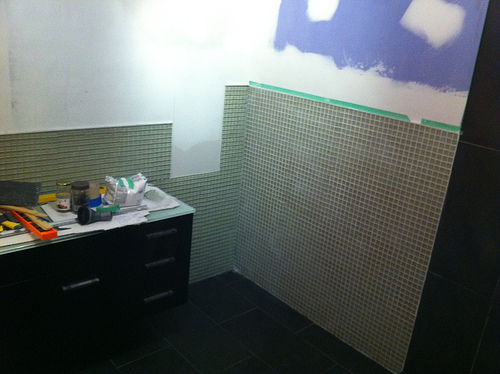<p>In science they say, “Water is the source of life. Without water, there can be no life.” We live in a world essentially covered with water. Even the human body consists of about 60 percent water. Without water, plant and animal life will not grow and flourish.</p>
<p>However, the availability of water can cause despair as in the case of a leaky basement. A basement having leaks is common to American homes according to the survey done by American Society of Home Inspectors. Sixty percent of houses in America suffer from leaky basement. Most of these houses were built in the early seventies when building regulations and inspections were not stringent.</p>
<p style="text-align: center"><img class="aligncenter" title="Leaky Basement" alt="Leaky Basement" src="http://myblogguest.com/forum/uploads/articles/2013/8/7_4.jpg" width="500" height="235" /></p>
<h3>Knowing the Source</h3>
<p>Leaks are caused by the penetration of water into a dwelling through the cracks on the masonry walls and the joints between the structural beams and masonry walls. It is important to ascertain the source of leaks in basements in order to decide what measure to be done to prevent a leaky basement. It is important for a home owner to understand the problem and know the two most common sources of leaky basements and these are:</p>
<ul>
<h3>
<li>
<strong>Surface water:</strong></h3>
</li>
</ul>
<p><strong> </strong>During heavy downpours or torrential rains water can quickly overwhelm the drainage system of a house. This deluge of water can quickly saturate the surrounding with wetness and the excess water runoffs can easily find its way into the basement. Without proper or sufficient waterproofing the walls can be easily drenched in water and vulnerable to water penetration.</p>
<ul>
<h3>
<li>
<strong>Ground water:</strong></h3>
</li>
</ul>
<p>Leakage due to ground water poses a more serious threat to the integrity of the basement as it can occur and re-occur long after the rain has gone. As rain water accumulates and is absorbed by the ground it continually rises toward the surface. If the water trapped in the soil reaches the underground structure of the house the water pressure will start to push the floors.</p>
<p>However, the structural strength and weight of the house is so great to make it buoyant, so the water will force its way through the porous material and through the miniscule cracks that leads to penetration of the basement floors causing leakage and seepage. Controlling the water penetration from beneath poses a challenging if not a difficult task.</p>
<h3>Drying a Leaky Basement</h3>
<p>After identifying and understanding the cause of leaks in the basement, it is important to know what are the methods available or in use in repairing the basement leaks. There are two basic methodologies that are in use and these are:</p>
<ul>
<h3>
<li>
<strong>Waterproofing:</strong></h3>
</li>
</ul>
<p>The term waterproofing means to protect the building material from being breached by water in order to withstand the hydrostatic pressure that pushes into a structure’s wall and floors. There are two different procedures to apply waterproofing treatment on a leaky basement.</p>
<p>The first procedure is called interior waterproofing, wherein the waterproofing is done inside the basement. This inexpensive means of waterproofing is effective against surface water penetration, especially, above the ground level. Using cement-based waterproofing compound to plaster the walls and floors to seal off minute cracks and pores, you can readily temporarily repair the damaged basement until a much effective alternative can be found.</p>
<p>The second procedure is called the exterior waterproofing. This is a more effective, otherwise, a more expensive means of waterproofing a basement. This is the only method accepted by the International Building Code to be effective, and is commonly used to prevent ground water into penetrating the basement. It is in essence, wrapping the basement with waterproofing membranes and other materials to protect it from water infiltration or penetration.</p>
<ul>
<h3>
<li>
<strong>Water draining:</strong></h3>
</li>
</ul>
<p>Another method that is widely used in preventing ground water build-up to protect basements is by drawing the ground water from the soil. This method is accomplished by laying a series of perforated pipes, i.e. French drain, deep underground at the perimeter of the basement leading into a sump tank that is equipped with a pump which will transfer the collected water to the surface sewer.</p>
<p>Depending on the seriousness of the water leakage, one method or a combination of two methods can prevent further leakage.</p>
<h5>Featured images:</h5>
<p><span class="license">License: Creative Commons</span></p>
<p><span class="source">image source</span></p>
<p>Scott Samson has been freelance writing for 15 years. He has been featured in numerous magazines like Home Away From Home and Family Handyman for his beautiful and ingenious designs. He is currently writing design blogs for www.aquamasterplumbing.com.</p>

Prevention Of A Leaky Basement
